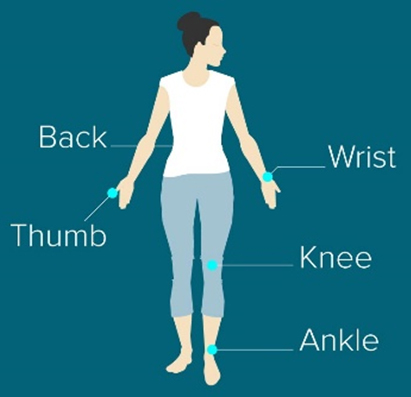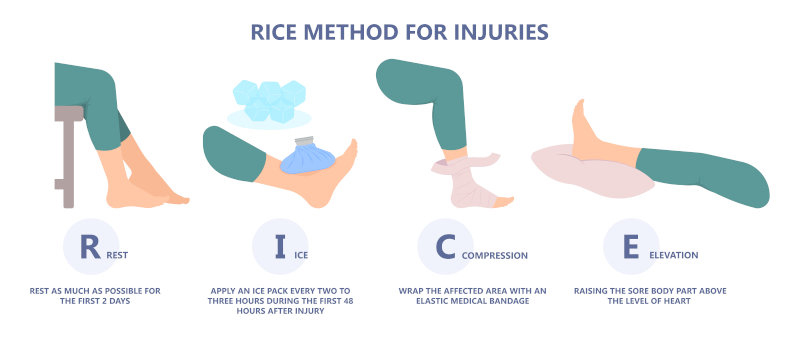Sprain
Sprain
A sprain is an injury to a ligament, the tough band of tissue connecting bones at a joints.
Common locations:

Signs and symptoms
Signs and symptoms will vary depending on the severity of the injury and may include pain, swelling, bruising, limited ability to move that affected joints, hearing or feeling apope in your joint at the time of injury.
Causes
- Over extension of joints
- Tear a ligament while severly stretching
Risk factors
- Environmental conditions
- Slipping or uneven surfaces are more prone
- Fatigue : Tired muscles are weaker than healthy muscles to provide
support to the joints
- Poor equipment: poorly maintained or improper fitting of footwears, sporting equipments.
“ Children have areas of soft tissue called growth plates, near the ends of their bones. The ligament around the joint are often stronger than these growth plates, so children are more likely to experience a fracture than a sprain “
Preventions
- Regular stretching and strengthening
exercises ,fitness work activity should
included in overall physical conditioning program.
- By working to strengthen and
condition the muscles around the joints, you can protect your joints for long
term.
- The best brace you can give yourself is your own “muscle brace
According to Ayurveda
In ayurvedha strength of the joint depends upon Snayu (ligament), Asthi
(bone) and Mamsa (muscles). Snayu (Ligament) maintains the stability of joints
during movement of the body. Any traumatic injury(Abhighatha) to the joint
causes severe pain, swelling, and improper movement of the joint. Sprain is
commonly caused by excessive stretching of ligaments and is classified into
first, second and third grade.The most common type of foot and ankle injury is
ankle sprain.
Muscle pain or cramps are known as mamsa pida or khalli vata. It comes under vatavyadhi vitiated Vāta dosha. Vyaana vata is a biological force which takes the responsibility to regulate the function of voluntary muscles. When you suffer from muscle cramps or pain, this means the vyaana vata has been impaired.
Management
The initial management of a sprain typically involves the R.I.C.E.
approach:
Rest, Ice, Compression, and Elevation. This method helps to reduce
pain, swelling, and promote healing.
Rest: Avoid activities that aggravate the pain and swelling.
Ice: Apply an ice pack (wrapped
in a towel to protect the skin) for 15-20 minutes every few hours, especially
in the first few days.
Compression: Use an elastic bandage to provide support and reduce
swelling, but ensure it's not too tight to avoid hindering circulation.
Elevation: Raise the injured area above heart level to help reduce swelling

Symptomatic management followed by Physiotherapy
In Ayurvedha focuses on Vata dosha and associated factors to manage muscle pain and cramps. Reducing vata dosha imbalance through herbal remedies. The treatment also prioritizes the external application of warm herbal oils,herbal application and by using Tight bandage /immobiliser with medicine.. Panchakarma therapies such as Abhyanga and Swedana along with internal medicine will alleviate mild to severe pain and inflammation.
Dr.Sayyed Mohammed Nadirsha Thangal
Medical
Officer
Dr. P. Alikutty's Ayurveda and Modern Hospital - Kottakkal
 en
en
 العربية
العربية









